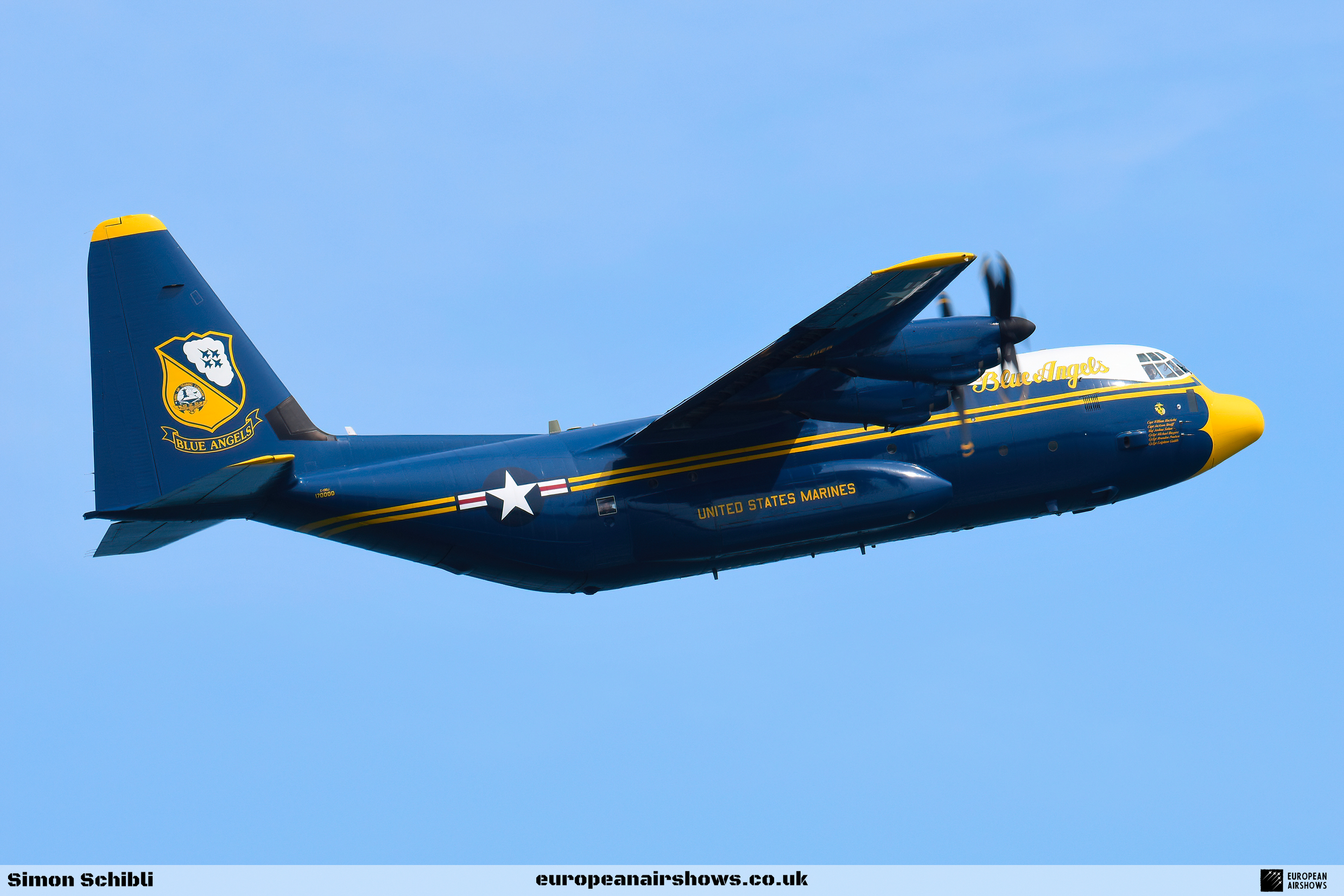
April 5 / Lockheed Martin C-130J Super Hercules first flight
First Flight 5 April 1996
Lockheed Martin C-130J Super Hercules
The Lockheed Martin C-130J Super Hercules is a four-engine turboprop military transport aircraft. The C-130J is a comprehensive update of the Lockheed C-130 Hercules, with new engines, flight deck, and other systems.
The C-130J is the newest version of the C-130 Hercules, and the only model currently in production. As of March 2022, 500 C-130J aircraft have been delivered to 26 operators in 22 countries.
On 16 December 1994, Lockheed received the launch order for the J-model from the United Kingdom's Royal Air Force (RAF). The C-130J launch order occurred after a UK government stalemate of several months that concerned whether to buy new transport aircraft from Europe or the United States. It was paired with a commitment to buy 40 to 50 of the proposed European Future Large Aircraft aircraft (FLA, which was later designated as the A400M). The FLA commitment, which reduced the size of the C-130J launch order, was intended to ensure a 20 percent British workshare in the FLA program, and to prevent German industry from threatening British Aerospace's position as the wing manufacturer on the FLA and future Airbus commercial projects. The RAF ordered 25 aircraft for a total fixed price of US$1.6 billion (~$2.77 billion in 2022), with first deliveries originally scheduled to begin in November 1996. The promised deliveries of the C-130J allowed the British Ministry of Defence to meet the 1996 deadline for replacing half of the RAF's aging fleet of Hercules aircraft, while the FLA aircraft was not expected to be available at the time until 2003.
To speed up the sale of military and commercial versions of the aircraft, Federal Aviation Administration (FAA) civil certification was pursued before delivery would happen. Civil certification was not a regulatory requirement and was unneeded for the RAF launch order. However, certification was stipulated in Lockheed Martin's contracts with some subsequent customers, including the United States Air Force (USAF) and the Royal Australian Air Force (RAAF).
The program suffered from problems such as software integration glitches that extended the schedule by three months, followed by a nine-month delay caused by undiscovered stall characteristics that required aircraft modification. The stall problem was caused by the additional power of the engines and the increase in propeller blades from 4 to 6, which changed the aerodynamics so that the aircraft had a greater tendency to stall and roll at lower speeds.
Lockheed Martin spent five months making 20 unsuccessful attempts at aerodynamic solutions, but the stall problems were so varied that the fixes it tried to make applied only to specific conditions (such as only during power off, or only at full power). Lockheed Martin changed the cockpit to include a stick pusher, which takes control and automatically pushes down the aircraft's nose if the pilot does not respond to stall warnings. The stick pusher was meant to be a temporary addition until Lockheed Martin could find an aerodynamic fix for all of the new stall conditions.
In late 1997, the company discovered that directional problems could be caused by ice build-ups. Because the AE 2100 engines were more powerful and fuel-efficient than the Allison T56 engines that they replaced, the engines no longer produced enough bleed air to continuously warm the tail. This situation had been anticipated, but the cyclic system that replaced the old de-icing system was found to be insufficient when the C-130J flew in extreme conditions. This problem forced the company to extend the de-icing system higher and lower on the vertical stabilizer to prevent ice formation, causing another delay of five months. These issues resulted in Lockheed Martin exceeding its initial C-130J development budget of US$300 million. By May 1998, Lockheed had spent over US$900 million (~$1.51 billion in 2022) in development costs for the C-130J. By the end of 1998, the company owed the RAF about US$50 million (~$84.2 million in 2022) in penalties due to delivery delays.
FAA type certification occurred in September 1998 following 4,000 hours of flight testing. Deliveries commenced in 1999 as the Hercules C4 (C-130J-30) and Hercules C5 (C-130J). The standard C-130J had a flyaway cost of US$62 million in 2008.
On 23 December 2004, U.S. Deputy Secretary of Defense Paul Wolfowitz approved a program budget decision that ended the procurement of C-130J for the Air Force and completed the remaining KC-130J order for the Marine Corps in 2006, which would save US$5 billion in the Pentagon budget. Deficiencies with the C-130J that were cited to support the decision included being unable to drop heavy equipment, the inability to perform combat search-and-rescue missions, cold-weather performance issues, the risk of paratroopers hitting the fuselage when jumping out of the aircraft, major cost increases, and inadequate radar to fly into hurricanes. U.S. Secretary of Defense Donald Rumsfeld reversed this decision on May 10, 2005, after members of Congress stated that the cancelling the pre-existing orders of 62 total Air Force aircraft over the following five years would result in about US$2 billion (~$2.89 billion in 2022) in termination costs to the government, which would have exceeded the cost of buying the aircraft.
In mid-June 2008, the United States Air Force awarded a $470 million (~$630 million in 2022) contract to Lockheed Martin for six modified KC-130J aircraft for use by the Air Force and Special Operations Command. The contract led to C-130J variants that will replace ageing HC-130s and MC-130s. The HC-130J Combat King II personnel recovery aircraft completed developmental testing on 14 March 2011. The final test point was air-to-air refuelling and was the first ever boom refuelling of a C-130 where the aircraft's refuelling receiver was installed during aircraft production. This test procedure was also applied to the MC-130J Combat Shadow II aircraft in production for Air Force Special Operations Command.






